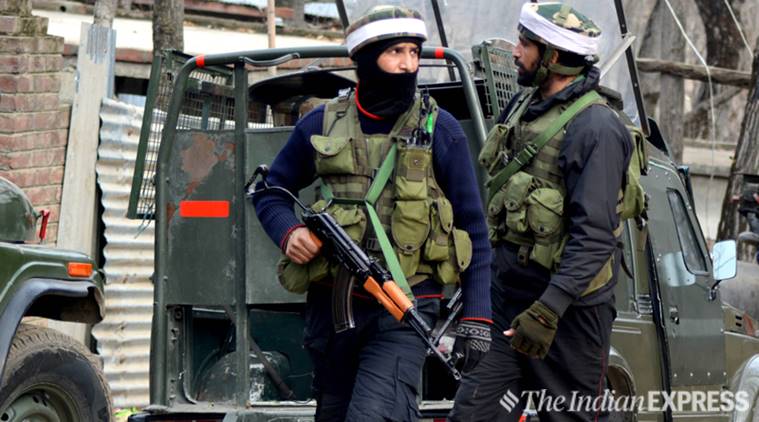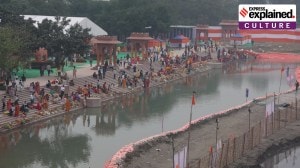 Fifteen years after Bhat brought moderation in JeI, the ban on the outfit has come as a surprise to many, including mainstream political parties in the Valley. (Express photo/Representational)
Fifteen years after Bhat brought moderation in JeI, the ban on the outfit has come as a surprise to many, including mainstream political parties in the Valley. (Express photo/Representational)
In November 1997, seven years after Jammu and Kashmir’s largest indigenous militant outfit Hizbul Mujahideen called itself the military wing of Jamaat-e-Islami (JeI), Ghulam Mohammad Bhat took a bold decision. As the Ameer (chief) of the organisation, he publicly distanced JeI from militancy. Bhat then re-directed the outfit’s focus to social and religious outreach in the Valley, leading to a vertical split in the organisation. Syed Ali Shah Geelani, the then political chief of JeI, along with many leaders, parted ways to found Tehreek-e-Hurriyat.
Fifteen years after Bhat brought moderation in JeI, the ban on the outfit has come as a surprise to many, including mainstream political parties in the Valley.

Jamat-e-Islami (JeI) Jammu and Kashmir was founded in 1942. The organisation, which believes in political Islam as espoused by its founder Syed Abu Ala Maududi, has a strong cadre base across the state. It is separate from Jamat-e-Islami Hind and is more inclined towards Jamat-e-Islami Pakistan in its political orientation.
Story continues below this ad
Read | Ban on JeI: MHA gives J&K Gov powers to order seizure of funds, assets
While the organisation has been part of the Valley’s electoral politics for many decades, its main objectives were religious and social.
However, despite participating in electoral politics, JeI maintained that Jammu and Kashmir was a disputed territory and sought its resolution through right to self-determination.
In 1990, when militancy erupted in the Valley, the Hizbul Mujahideen called itself the military wing of JeI. JeI was immediately banned in the state for three years.
Story continues below this ad
This was the second time JeI was declared “unlawful”. It was first banned in 1975, when Sheikh Abdullah and Prime Minister Indira Gandhi reached an accord — called Indira-Abdullah accord. The ban was revoked two years later when Janata Party came to power. It was JeI that was the main force behind the Muslim United Front (MUF), an amalgam of political, social and religious outfits that took on the National Conference-Congress alliance in 1987 elections. These elections were allegedly rigged, leading to militancy in the Valley.
With Hizb calling itself the military wing, JeI, willingly or unwillingly, jumped into the militancy. But they had to pay a huge price for it. While the outfit remained on the continuous radar of security agencies, hundreds of its activists were killed by the counter-insurgent force Ikhwan. In November 1997, JeI under Bhat’s leadership distanced itself from militancy.
Don’t miss in Express Explained: Global diplomacy in India-Pakistan face-off
This article first appeared in the print edition on March 2 under the title ‘After electoral politics, militancy, Jamaat-e-Islami had renewed focus on socio-religious outreach’.

 Fifteen years after Bhat brought moderation in JeI, the ban on the outfit has come as a surprise to many, including mainstream political parties in the Valley. (Express photo/Representational)
Fifteen years after Bhat brought moderation in JeI, the ban on the outfit has come as a surprise to many, including mainstream political parties in the Valley. (Express photo/Representational)





































